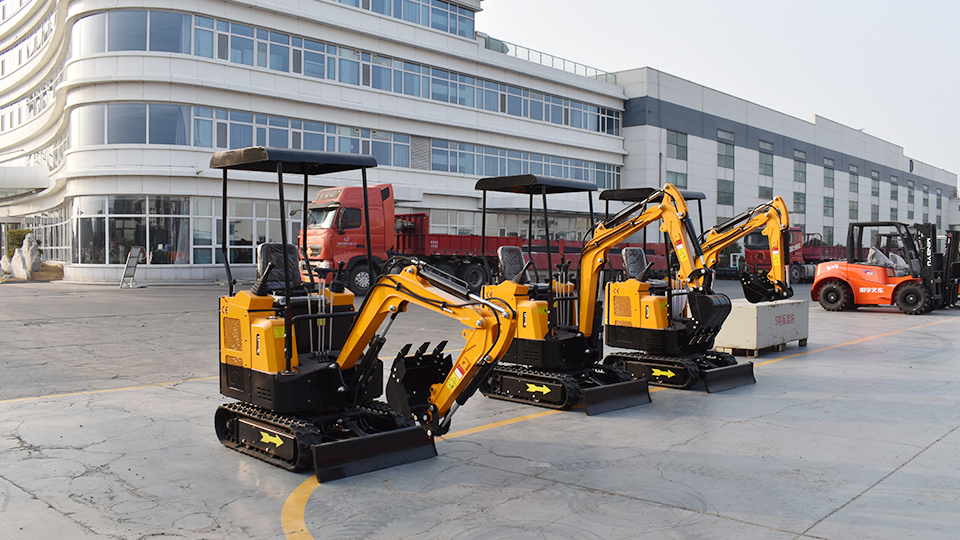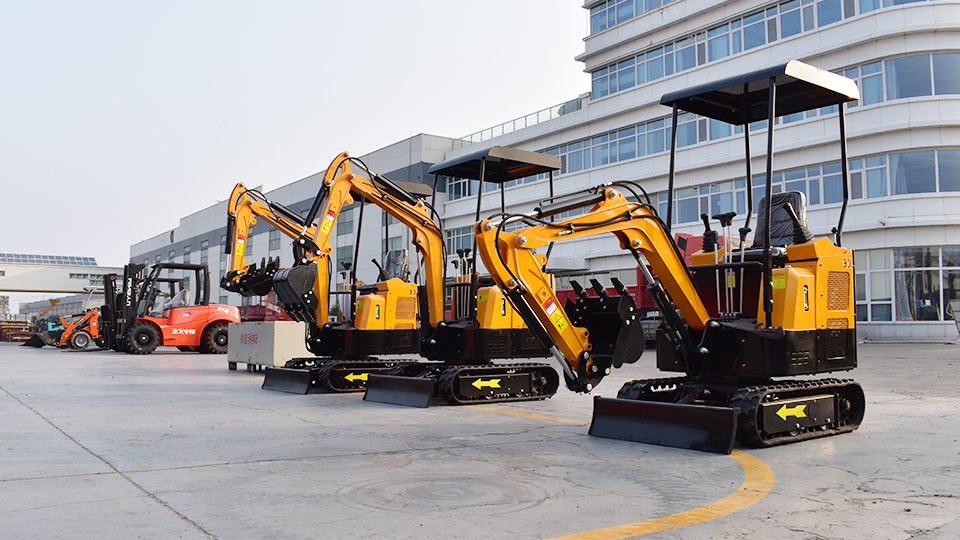The excavator, a symbol of raw power and precise control, stands as a cornerstone of modern construction, demolition, and earthmoving. Its ability to dig, lift, swing, and manipulate materials with remarkable efficiency makes it an indispensable asset on countless job sites. However, operating an excavator safely and effectively is a skill that demands thorough understanding, meticulous training, and continuous practice. This comprehensive technical article delves deep into the intricacies of excavator operation, covering everything from pre-operation checks to advanced digging techniques and safety protocols. Whether you're a novice operator or seeking to refine your skills, this guide provides the knowledge necessary to master the iron beast.

Before even thinking about starting the engine, a meticulous pre-operation check is paramount. This routine ensures the machine is in safe working order and prevents potential accidents or equipment damage.
A. Walkaround Inspection:
A thorough visual inspection of the entire excavator is the first crucial step. This involves:
Undercarriage: Examine the tracks or tires for damage, excessive wear, proper tension (for tracks), and adequate inflation (for tires). Check for any debris lodged in the tracks or around the wheels. Inspect the rollers, idlers, and sprockets for wear or damage.
Hydraulic System: Visually inspect all hydraulic hoses and fittings for leaks, cracks, or abrasions. Check the hydraulic fluid level in the reservoir, ensuring it's within the recommended range. Inspect the hydraulic cylinders for any signs of damage or leakage.
Engine Compartment: Check the engine oil level, coolant level, and fuel level. Inspect belts and hoses for wear or damage. Ensure battery terminals are clean and securely connected. Look for any signs of leaks (oil, coolant, fuel).
House and Cab: Inspect the cab for cleanliness and any loose objects that could interfere with operation. Ensure all windows are clean and provide clear visibility. Check the condition of the seat and seatbelt. Verify the functionality of all controls, including levers, pedals, and switches. Ensure the horn, lights, and windshield wipers are working correctly.
Boom, Dipper Stick, and Bucket: Inspect the boom, dipper stick, and bucket for any cracks, bends, or damage. Check the condition of the bucket teeth or cutting edge for wear or damage. Ensure all pins and bushings are properly greased and secured. Inspect the quick coupler (if equipped) for proper function and secure attachment of any implements.
Safety Features: Verify the functionality of all safety devices, including the rollover protective structure (ROPS), falling object protective structure (FOPS), mirrors, and any warning alarms. Ensure fire extinguishers are present and charged.
B. Fluid Level Checks:
Accurate fluid levels are critical for the proper functioning and longevity of the excavator. Refer to the operator's manual for specific instructions and recommended levels for:
Engine Oil: Ensures proper lubrication of engine components.
Coolant: Prevents overheating of the engine.
Hydraulic Fluid: Powers the hydraulic system responsible for all digging and movement functions.
Fuel: Provides the necessary energy to operate the engine.
C. Control Familiarization:
Before starting the engine, take the time to familiarize yourself with the location and function of all controls. This includes:
Joysticks: Typically control the boom lift/lower, dipper stick in/out, and house swing (rotation). Control patterns can vary (ISO, SAE, CAT), so understanding the pattern of the specific machine is crucial.
Travel Levers/Pedals: Control the forward/backward movement and steering of the excavator (tracks or wheels).
Throttle Control: Regulates engine speed and hydraulic power. This can be a hand lever or a dial.
Auxiliary Hydraulic Controls: Operate attachments like breakers, grapples, or augers.
Safety Lock Lever: Disables hydraulic functions to prevent accidental movement when the operator is entering or exiting the cab.
Switches and Buttons: Control lights, wipers, horn, and other auxiliary functions.
Instrument Panel: Displays critical information such as engine temperature, hydraulic pressure, fuel level, and hour meter readings.
D. Seat and Mirror Adjustment:
Adjust the operator's seat for comfortable and ergonomic positioning, ensuring you can reach all controls without straining. Adjust the mirrors to provide optimal visibility around the machine.
II. Starting and Shutting Down the Excavator: Following Proper Procedures
Starting and shutting down the excavator correctly helps prevent damage to the machine and ensures a safe operating environment.
A. Starting Procedures:
Ensure all controls are in the neutral position and the safety lock lever is engaged.
Turn the ignition key to the "on" position. Allow the instrument panel to illuminate and any self-checks to complete.
Turn the key to the "start" position and release it once the engine starts. Avoid prolonged cranking, which can damage the starter motor.
Allow the engine to warm up for a few minutes at a low idle speed. This allows the fluids to circulate and the engine to reach its optimal operating temperature. Refer to the operator's manual for specific warm-up recommendations.
B. Shutting Down Procedures:
Park the excavator on a level surface. Lower the bucket to the ground and ensure the machine is stable.
Disengage all hydraulic controls and engage the safety lock lever.
Allow the engine to idle for a few minutes to cool down gradually. This helps prevent thermal shock and prolongs engine life.
Turn the ignition key to the "off" position.
Remove the key and secure the machine if necessary.
III. Basic Operating Techniques: Mastering Movement and Manipulation
Once the pre-operation checks are complete and the engine is running smoothly, the next step is to master the basic operating techniques.
A. Excavator Movement (Traveling):
Tracked Excavators:
Forward and Backward Movement: Push or pull the travel levers/pedals in the desired direction.
Steering: To turn, push or pull one lever/pedal more than the other, or push/pull one while keeping the other in neutral. Counter-rotation (spinning the tracks in opposite directions) allows for tight turns but should be used cautiously on soft or uneven ground.
Traveling on Slopes: Travel straight up or down slopes whenever possible. Avoid traversing slopes, which can lead to instability. Keep the bucket low to the ground for added stability.

Wheeled Excavators:
Forward and Backward Movement: Use the accelerator pedal and brake pedal.
Steering: Turn the steering wheel as you would in a truck or car.
Traveling on Uneven Terrain: Exercise caution and maintain a slow speed. Be aware of potential obstacles and uneven surfaces.
Identify underground utilities: Before digging, always check for underground utilities (gas lines, electrical cables, water pipes) and follow safe digging practices. Call 811 (in the US) before you dig.
Be aware of ground conditions: Avoid operating on unstable or excessively sloped ground.
C. Operating Procedures:
Never operate an excavator under the influence of drugs or alcohol.
Never allow unauthorized personnel to operate the machine.
Always use the seatbelt.
Engage the safety lock lever when exiting the cab or when the machine is not in operation.
Follow the manufacturer's operating instructions and safety guidelines.
Report any malfunctions or safety concerns immediately.
Ensure proper ventilation when operating in enclosed spaces.
D. Signaling and Communication:
Understand and use standard hand signals for communication with ground personnel. Ensure clear and concise communication to avoid misunderstandings and potential accidents.
E. Emergency Procedures:
Know the emergency shutdown procedures for the excavator. Be aware of the location of fire extinguishers and other safety equipment. Understand the site's emergency response plan.
VI. Maintenance and Care: Ensuring Longevity and Performance
Regular maintenance is essential for the safe and efficient operation and longevity of an excavator.
Daily Maintenance: Perform daily pre-operation checks, lubricate necessary components, and clean the machine.
Regular Servicing: Follow the manufacturer's recommended maintenance schedule for oil changes, filter replacements, and other periodic servicing.
Prompt Repairs: Address any malfunctions or damage promptly to prevent further issues and ensure safe operation.
Proper Storage: When not in use, park the excavator on a level surface, lower the bucket to the ground, and secure the machine.
Conclusion:
Operating an excavator is a complex skill that requires a combination of technical knowledge, practical ability, and a strong commitment to safety. By diligently following pre-operation procedures, mastering basic and advanced operating techniques, and adhering to strict safety protocols, operators can harness the immense power and versatility of these machines effectively and responsibly. Continuous learning, attention to detail, and a proactive approach to safety and maintenance are the hallmarks of a skilled and proficient excavator operator, ensuring both productivity and a safe working environment. Mastering the iron beast is an ongoing journey of refinement and respect for the capabilities and potential hazards of this essential piece of heavy equipment.
Post time:Sep-25-2020
